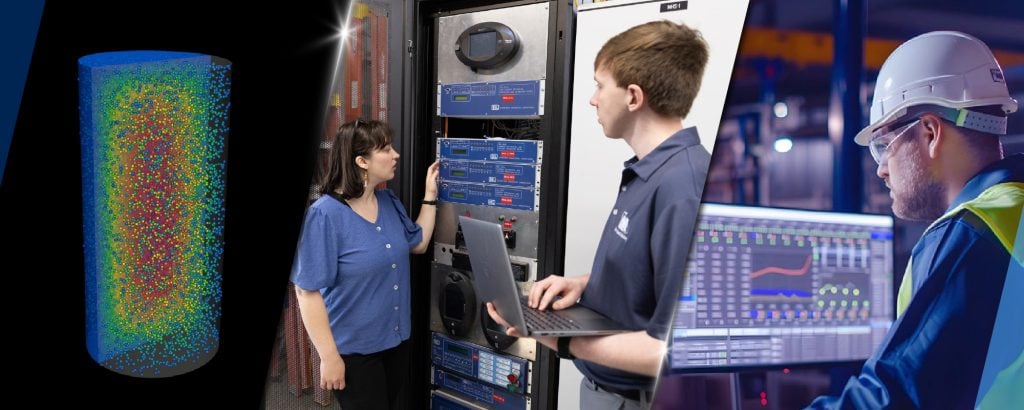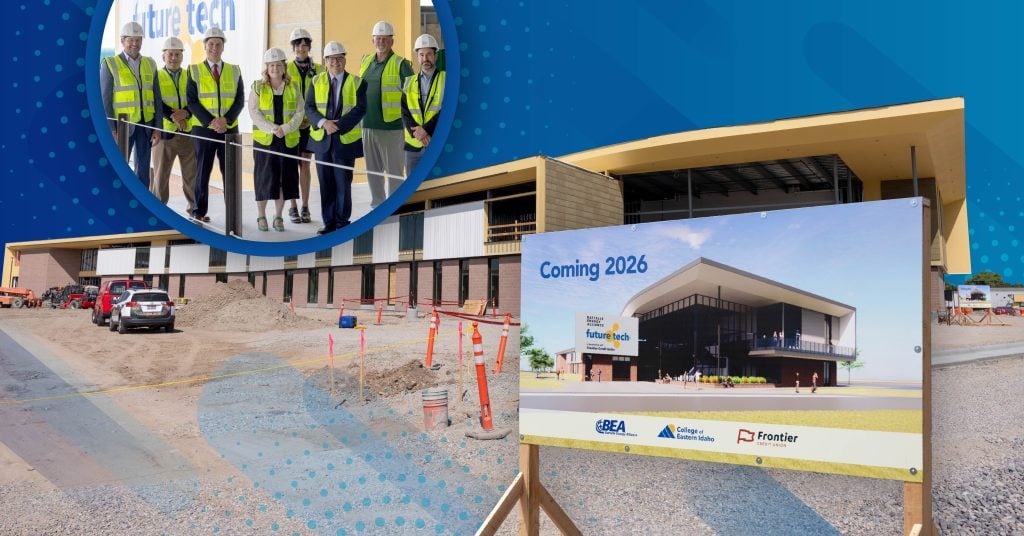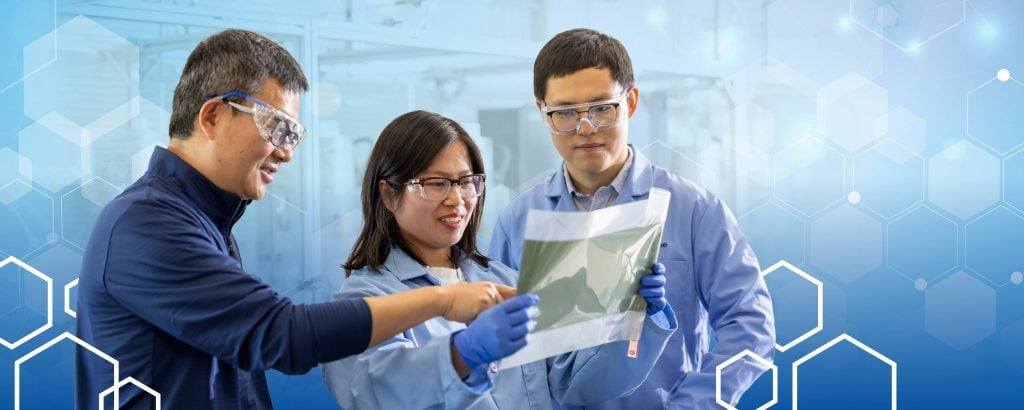Idaho National Laboratory has been honored with two Federal Laboratory Consortium (FLC) Awards in 2019 in the Far West Region. The FLC is formally chartered and mandated by Congress to promote, educate and facilitate technology transfer nationwide among more than 300 federal laboratories, research centers and agencies. The Far West region, which includes more than 50 laboratories in Alaska, Arizona, California, Hawaii, Nevada, Oregon, Washington and Idaho, honors achievements by member laboratories each year in a number of categories.
The FLC Far West Region awards will be presented at the joint FLC Far West/Mid-Continent Regional Meeting Nov. 5-7 at the Hilton Garden Inn in Livermore, California.
Outstanding Technology Development: LoTempLene
INL’s LoTempLene technology is a revolutionary electrochemical refining process that converts ethane from natural gas liquids into ethylene, the chemical building block used in making polymers in everything from cellphone cases to disposable diapers. LoTempLene has the potential to displace a process called steam cracking, the single most energy-consuming part of ethylene production.
In April 2018, a team of INL researchers led by Dr. Dong Ding, reported they had developed a process for converting ethane to ethylene that uses 65 percent less energy and produces up to 98 percent less carbon dioxide than steam cracking. If the process is powered by a renewable energy source and if the hydrogen it creates were captured and incorporated into fuel cells, the results could add up to a net gain in process energy, they said.
Falling electricity prices have made LoTempLene a viable alternative to traditional ethylene production methods. The process involves a pure proton-conducting electrochemical cell that feeds ethane to the anode in an electrochemical membrane reactor. Electricity separates protons (hydrogen ions) from the molecules, leaving ethylene, an unsaturated hydrocarbon that can be extracted as product or undergo further reaction to form higher hydrocarbons, including gasoline, diesel, lubricants and wax. Meanwhile, the protons migrate through a dense proton-conducting membrane to the cathode, where they combine with electrons to form high-purity hydrogen gas.
The energy-intensive steam cracking process currently used in industry is estimated to contribute 60% of final product cost and two-thirds of the manufacturing carbon footprint of ethylene production. LoTempLene makes refining possible at much lower temperatures—400 to 550 C compared to 850 C—while maintaining comparable ethylene yields.
Peer reviewers for Energy & Environment Science and Technology offered the following comments on the INL team’s 2018 journal submission: “(this work) may not only allow reducing energy consumption, but the resulting separation of reduction product (hydrogen) and oxidation product (ethylene) formation, it can help shifting reaction equilibria towards product formation (thus enhancing selectivity and yield) and can produce high purity products with less need for product separation/purification.”
Outstanding Commercialization Success: Advanced Electrolyte Model
The heart of any battery is the electrolyte—salts and solvents responsible for transporting electrically charged ions from one electrode to another, creating a flow of electricity in the process. Different combinations of electrolyte compounds deliver different results, however, and performance can be dramatically different between 4.2-volt and 5-volt batteries or widely varied temperatures.
Advanced Electrolyte Model (AEM) is a molecularly based computer simulation program designed to give fast information on the properties of complex electrolyte formulations and how they can influence battery performance. It was developed by Dr. Kevin Gering, a distinguished staff scientist at Idaho National Laboratory.
INL has licensed AEM directly to two major automotive manufacturers, one of the top five global Lithium-ion (Li-ion) battery manufacturers, Dalhousie University, Carnegie Mellon University, a leading medical device manufacturer and a major overseas battery developer and end user. It has also been licensed to Lawrence Berkeley National Laboratory, indicating cross-lab value for collaboration. Other licenses are pending. Commercialization efforts at INL have been led by Commercialization Manager Ryan Bills.
No one expects the demand for Li-ion batteries to slow down. According to data compiled by Grand View Research, the global market for them is expected to reach $93.1 billion by 2025, with a compounded annual growth rate of 17%. “In the corporate world, time is money,” Gering said. “A product that can provide answers that would otherwise take six months of research saves millions. Getting a product to market quicker provides even more savings. AEM gives answers about a million times faster than density functional theory and molecular dynamics, and the answers are often more accurate and span more conditions.”
INL’s Technology Deployment office actively markets AEM through online publication on EERE’s Innovation Portal and at industry-focused energy storage and other technology conferences nationally. AEM has attracted independent interest from partners in industry and academia through seminars and scientific publications. When Doug Brune of Dow Chemical heard Gering speak about AEM at a conference in 2011, he knew it might help him with a new electrolyte he was trying to develop. As a result, INL entered into a negotiated work agreement with Dow. “There are models out there that look at viscosity or conductivity or other individual electrolyte factors, but I haven’t seen any others like (AEM),” Brune said. “His does it all.”
High-profile attention has also come from Dalhousie University in Nova Scotia, Canada. In June 2016, Dalhousie, Tesla Motors, and Canada’s Natural Sciences and Engineering Research Council funded Dr. Jeff Dahn as an industrial research chair to develop Li-ion batteries with longer lifetime, higher energy density and lower cost. Not long after, Dahn read about AEM and invited Gering for a three-day visit. Gering, Dahn and Eric Logan, a Dalhousie graduate student, have since gone on to co-author several papers.





